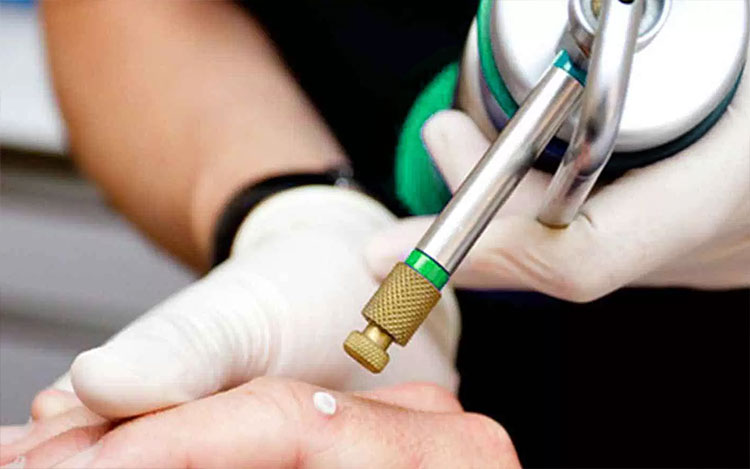Cryotherapy is a form of treatment that has been practiced since the time of the Egyptians and Hippocrates. Ice cream is also known as snow or cold treatment. It shows its effect by causing tissue destruction to destroy diseased tissues in the applied area.
The gas to be used in the freezing process is passed through the probe and causes the tip of the probe to cool excessively. When the gas used in cooling is pushed to the end of the probe by pressure, the gas suddenly expands in volume and the end of the probe cools down as it draws heat from around. Due to the effect of cold, pure water inside and outside the cell is converted into ice crystals, resulting in the death of the cell. For this purpose, cryogenic substances such as solid carbon dioxide (dry ice) at -78.5°C, liquid nitrogen at -190°C, fluorocarbon and nitrous oxide are used. It is also applied cold to the tissues with tools called cryocoter made of silver or copper.
Which diseases can it be used for?
Warts ( including genital warts),
Molloscum contagiosum,
Sunspots
Epidermal cysts,
Keloid,
Seborrheic keratosis,
Actinic keratosis,
Keilit,
Dermatofibroma,
Alopecia areata (pelad),
Severe acne,
Nail stinging,
It is applied in basal cell skin cancer.
What are the advantages of this method?
It allows the treatment of some skin tumors without the need for surgical application (especially in elderly patients).
Recurrence in warts after cryotherapy is less compared to other methods.
Good responses are being received in the treatment of sunspots.
The risk of serious injury or complications is extremely low.
It is fast and easy to implement. It can be performed under polyclinic conditions.
It is cheap and safe.
It does not require anesthesia.
There is no need to change the normal life after the procedure. It does not affect sports activities and working life.
The risk of bleeding after the procedure is extremely low.
Cosmetic results are good.
It can be used in pregnant women.
Are there any side effects?
The most important side effect after cryotherapy is pain, swelling and fluid collection at the application site. For this reason, pain relievers may be recommended to patients immediately after administration. After the healing is completed at the application site, discoloration or darkening of the skin may occur.
How long does it take to get results?
The duration of the result depends on the location, depth and size of the lesion. For example, 5-6 sessions are required for treatment of warts under the feet, while the lesion can heal in 2-3 sessions in areas such as hands, face and genital area.

